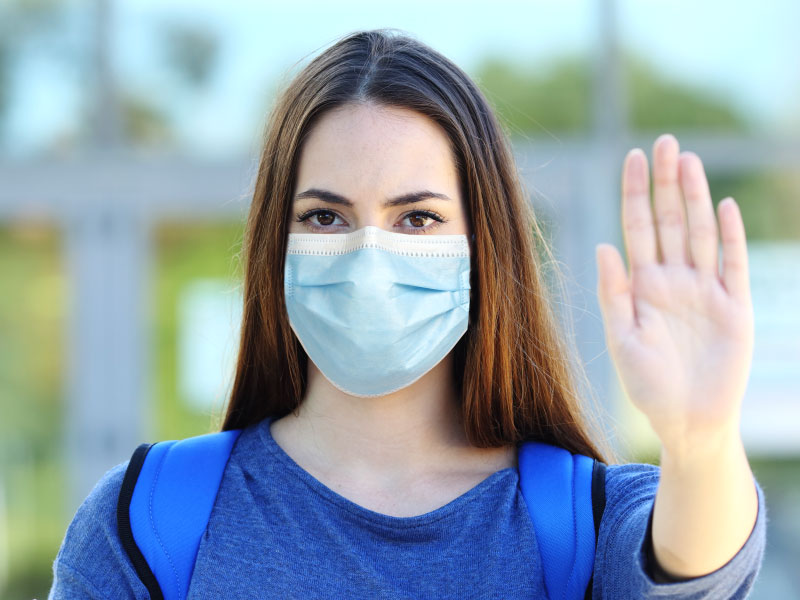They are among us, countless, invisible! Did you recognise them? They are viruses. Faced with viral infections, humans have developed several means of protection, including respiratory masks, which have proven their effectiveness. How do masks stop viruses? We explain.
The virus, a portrait of an invisible but formidable enemy
In the family of microbes, I ask for viruses. Even smaller than their cousins, bacteria, viruses are micro-organisms, most of which are pathogenic, i.e. responsible for diseases. With an average size of about 100 nanometres, or 0.1 micrometres (or microns), or 0.0001 millimetres (it’s mind-boggling!), they can only be observed under an electron microscope.
Their particularity: unable to live and reproduce on their own, they must adopt a parasitic behaviour. The virus will settle on a living cell and colonise it to ensure its survival and multiplication. And this involuntary host is often us, the humans!
Colds, flu, gastroenteritis, measles, covid, etc., all these plagues have one thing in common: they are infections caused by viruses. These viruses are transmitted from one person to another, most often by direct contact (by touching, passing an object from hand to hand and then putting the hand to the mouth) or by air (by breathing in the same space).
It should be noted that viruses are unable to spread themselves through the air. To do this, they use a means of transport: aerosols or droplets, i.e. the more or less large sprays that we emit when we breathe, speak, cough or sneeze.
Barrier measures against viruses
To fight against the spread of viral infections, we have learned to respect barrier gestures in collective places, notably
- Keeping your distance,
- washing our hands regularly,
- cough and sneeze into your elbow,
- using a single-use handkerchief and throwing it away after each use,
- air the premises regularly,
- wear a good quality surgical mask
How do masks stop viruses?
The secret of surgical masks to stop viruses? It’s the layer of filter media, the so-called meltblown, at the heart of the mask. This non-woven material is made by entangling micro-fibres. The process results in a material that is strong, breathable and, above all, filtering.
Surgical masks filter out 95 to 98% of bacteria with an average size of 3 micrometres or microns.
“But, you may say, a virus measures on average 0.1 micrometres. So it falls through the cracks?
No. Remember: a virus is unable to move on its own, it “travels” through the air through aerosols 50 to 150 times larger than it (between 5 and 15 microns in diameter).
In addition, the filter media is strongly electrostatically charged to attract the particles. These electrostatic charges considerably improve the level of filtration.
In this way, viruses emitted by an infected person wearing a mask have a very low risk of passing the mask barrier. If, in addition, the person opposite is also wearing a mask, the risk of contamination is minimal.
